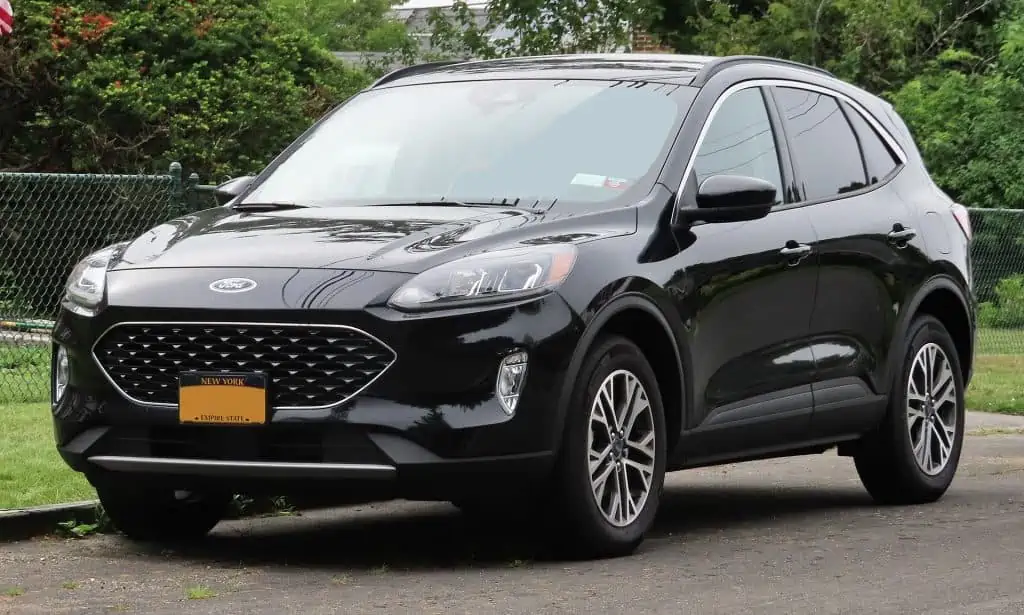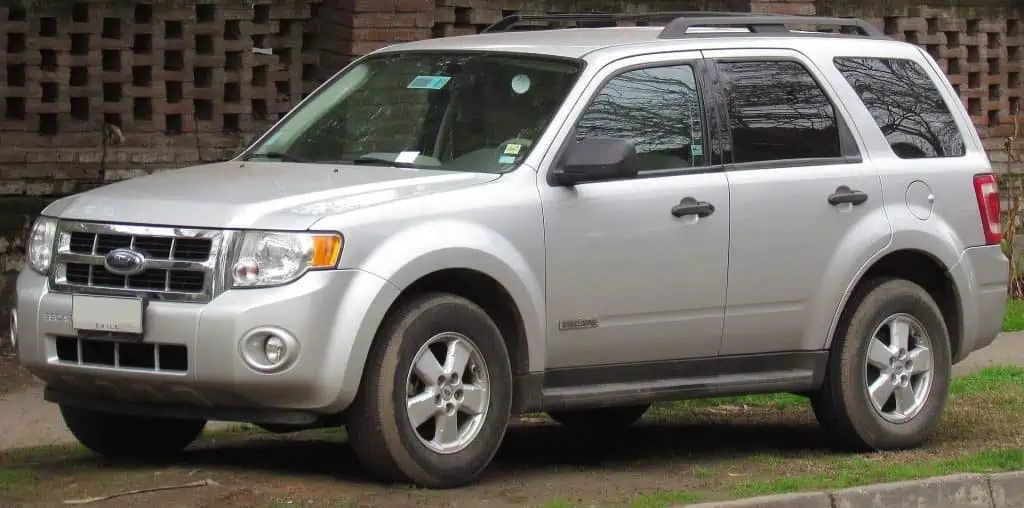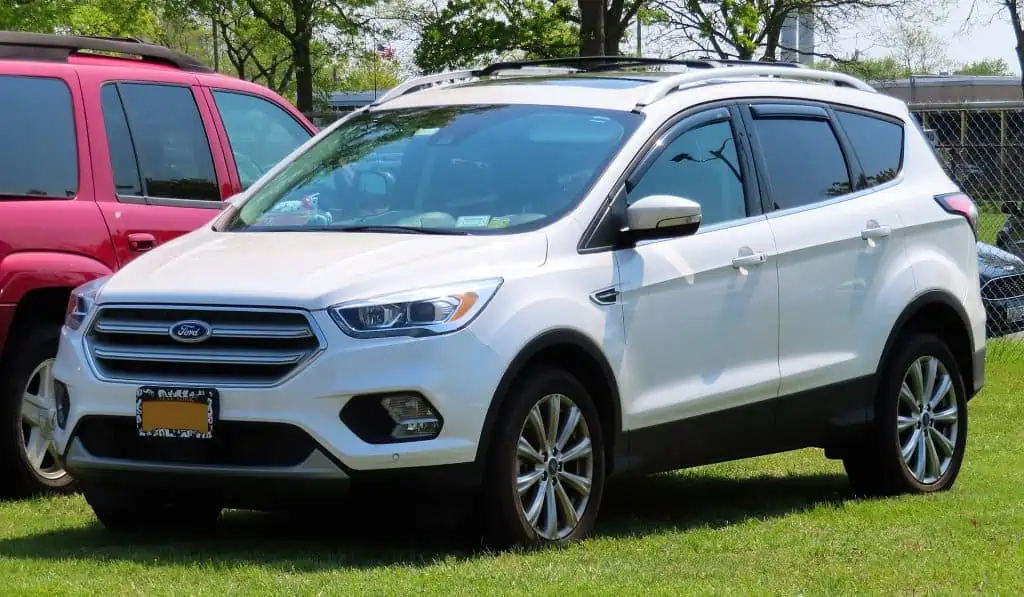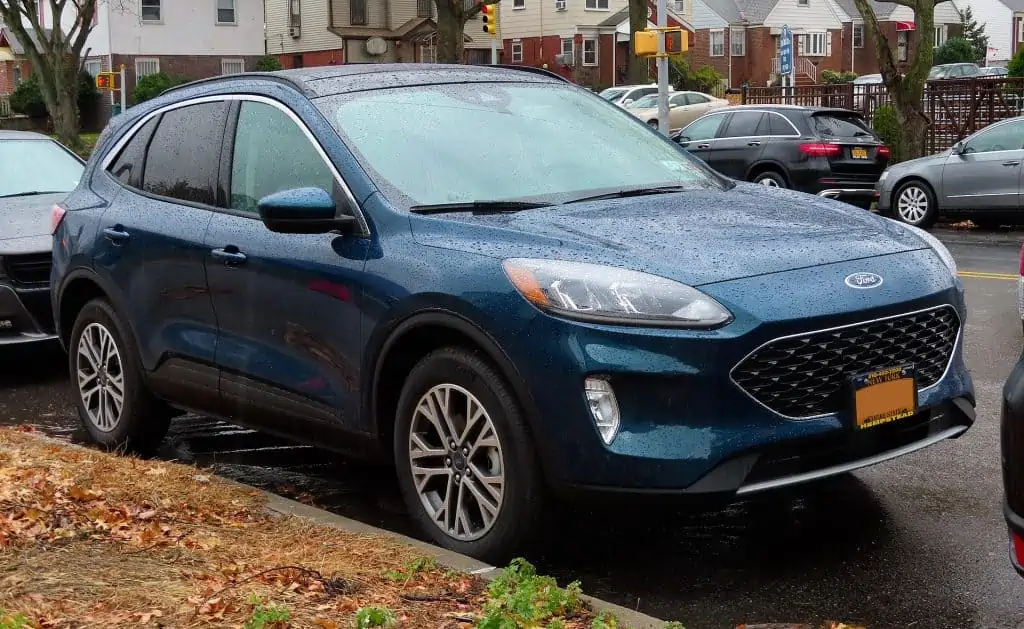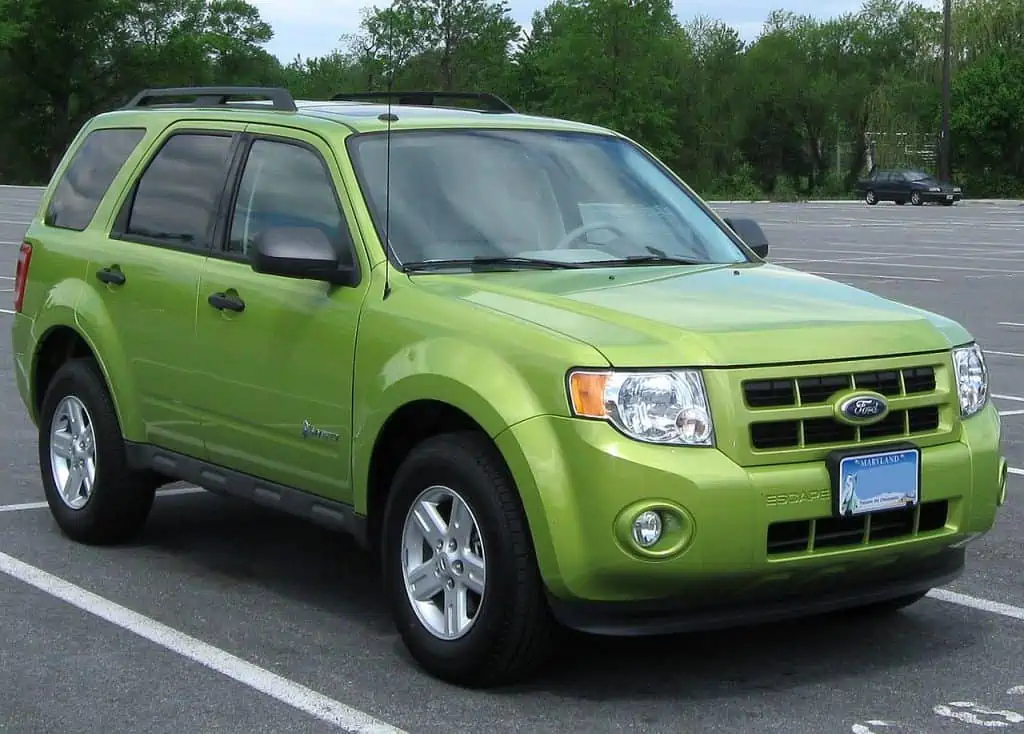Are you looking to learn which Ford Escape years to avoid because you intend to buy a used Ford Escape? If that is the case, then you have come to the right place because there will be a lot to discuss on this subject, and we will go into great detail about all of the potential issues with this SUV.
It’s always a good idea to conduct thorough research before purchasing a vehicle. There are dozens of brands and hundreds of vehicles available on the market. And they’re all having issues. Some of them have more, some have less.
Finding those with the fewest issues is your goal, for this reason. Why is this important? Some of them, however, have incredibly expensive issues that will make you regret buying the car. Consider purchasing a vehicle with a problematic engine.
You will spend thousands of dollars to replace one of these cars, and owning one will be a complete nightmare. To help you avoid these circumstances and not look back on them later, we will do everything in our power.
To move on to the generations, we must first understand what the Ford Escape is. There are four distinct generations of this model, and we’ll cover as much as we can about each one in terms of features, issues, best years, and Ford Escape years to stay away from. So, keep reading if you want to learn more.
The Ford Escape: Which Car Is It?
Therefore, let’s look at what the Ford Escape is in general before we analyze the generations and the Ford Escape years to avoid each one of them. Why is this important? Well, some people are interested in this approach but do not yet understand its fundamental principles.
The Ford Escape is what, then? A small crossover SUV available only in the US is called the Ford Escape.
The first generation of the Escape was co-developed by Ford and Mazda as an early 2000s attempt by Ford to enter the crossover trend.
As you are probably aware, Ford and Mazda have had a close working relationship for a long time and have shared a great deal of information and components. And this is seen in vehicles made up until 2008 when these two firms split.
2020 Ford Escape by Kevauto / CC BY-SA 4.0. The 2020 Ford Escape model is one of the most trustworthy and contemporary vehicles you should purchase due to its affordability and vast feature set.
The Escape is one of these items that survived and does well in the US market even if the Ford-Mazda collaboration no longer exists.
Four distinct generations in all were introduced to the market during these protracted years. And to be honest, this model is one of the top sellers on the market, selling more than 250,000 units annually.
What you need to understand right now is that despite the Escape’s legendary status, it still has significant issues. Ford Escape years to avoid, as well. And it is what we will talk about later.
Which are the Ford Escape Years to Avoid?
Ford’s Escape models from 2006 to 2009 were notoriously problematic, with significant gearbox failures being the most frequently reported issue. The Escape model’s weakest year was 2014, though.
For the 2014 Ford Escape, transmission issues are also regularly mentioned.
Other difficulties with the 2014 model included the car losing all acceleration, improper shifting, and other transmission-related problems.
The following Ford Escape models have several reported issues, therefore avoid them if at all possible.
Additionally, these model years have the most costly and significant transmission issues that are reported annually for the Ford Escape.
The Ford Escape years to avoid are as follows:
- 2017
- 2014
- 2013
- 2011
- 2010
- 2009
- 2008
- 2006
Why Do These Years Feature In Ford Escape Years to Avoid List?
The Ford Escape has had both many highs and a few lows. All purchasers should steer clear of a select few years while shopping at used Escapes. We’ll explain why you should steer clear of the aforementioned years in this section.
2017
If CarComplaints.com and CarProblemZoo.com can agree on anything, it’s that there have been several instances of early engine failure in the 2017 Ford Escape.
Total complaints for the 2017 Escape were 125 on CarComplaints.com and 783 on CarProblemZoo.com.
The check engine light, transmission failure, and coolant seeping into the cylinders (engine failure) are the 2017 Ford Escape’s key issues.
2008 Ford Escape by order_242 / CC BY-SA 2.0. Ford Escape 2008-related problems have received the most attention. At this time, there have been more than 600 complaints for this model year than for any other since the Escape made its debut a few years ago.
2014
The 2014 Ford Escape has been the weakest model to date. There were well over 200 complaints, which doesn’t seem too bad, according to CarComplaints. The 2014 Ford Escape has the reputation of being the worst Ford Escape ever produced, despite earlier years having more complaints of the same kind.
The gearbox was the main problem, and fixing it can cost up to $5000 in some regions. Minor faults with the transmission after more than 100,000 miles to concerns with the car stopping abruptly while driving were all reported.
Electric system malfunctions, such as a broken ignition switch, frayed wires, low batteries, and electronic ignition problems, are some of the most frequently reported complaints. As you can see, if a malfunction occurs when you are driving fast on the highway, all of these problems could result in a tragic collision.
Some drivers have also complained about weather stripping and roof leaks, as well as broken steering wheels, backup cameras, and sensors. Transmission problems are another issue that is frequently observed.
2013
With over 3,000 NHTSA complaints, the 2013 Escape is a troubled SUV and has received the “Avoid Like the Plague” mark from CarComplaints.com. Unfortunately, the engine is a common source of problems with the 2013 Ford Escape. Stalls, engine failure, check engine light illumination, and even engine fire are some of the reports.
According to several stories, their Escape’s engine stalled suddenly. The most typical repair was replacing the fuel sensor, electronic throttle body, main wire harness, or coolant bypass valve.
One of the major mechanical problems with the 2013 Escape was its transmission, which was also the subject of countless complaints. Transmission failure appears to be the most prevalent of the several problems of this type.
According to at least twenty reports, the transmission failed unexpectedly and in the middle of the flow of traffic. According to several complaints, transmission slippage was also typical and can occur after 60,000 km.
During my time driving the 2013 Ford Escape, I ran into several issues, including the check engine light turning on, sudden stalling, and a few engine failures. My mechanic was able to fix the stuck engine by changing the electronic throttle body.
Additionally, I’ve read a few reports from other 2014 Escape owners concerning transmission issues that resulted in the transmission failing suddenly. Overall, the 2013 Ford Escape is a very problematic model year, so you should steer clear of it at all costs.
2011
According to CarComplaints.com, the 2011 Ford Escape is yet another recipient of the “clunker” distinction. This model year was notorious for having power steering problems when driving and for having several engine and powertrain problems.
There were a total of 231 complaints about the 2011 Escape on CarComplaints.com and 1,582 issues reported on CarProblemZoo.com.
2018 Ford Escape Titanium by Kevauto / CC BY-SA 4.0. With routine maintenance and cautious handling, the Ford Escape’s mileage is capable of reaching 250,000. 130,000 miles is the average mileage. However, the distance may alter with time.
The primary issues in 2011 included a failing transmission, failing power steering, total loss of throttle response, jerks, and reluctance when shifting or accelerating.
2010
If you’re seeking to purchase a used Ford Escape, the 2010 model year is another one to stay away from.
More than 2,000 complaints have been made against this car, according to the NHTSA.
The majority of the complainants have detailed issues with speed control and the power train.
According to accounts I’ve read, the electronic throttle bodies in both the 2.5-liter four-cylinder and 3.0-liter V6 engines are problematic. As a result, sudden power loss has happened to drivers while they are on the road.
Component failures, engine age-related breakdowns, and gas leaks are some of the other problems associated with the 2010 Escape that has been recorded. It’s also important to note that this car has had at least five recalls.
Some Ford Escape models just can’t seem to get away from the “beware of the clunker” label.
Unfortunately, 2010 is one of those years that couldn’t avoid this shame.
For this model year, engine troubles are the most frequently reported complaints. Over 500 reports of engine (and engine cooling)-related problems at CarProblemZoo.com further support this.
At CarComplaints.com, the 2010 Escape received a total of 270 complaints, while CarProblemZoo.com recorded 2,812 issues.
The rear window blowing out, powertrain failure, and power steering loss are the 2010 Ford Escape’s key issues.
2009
Although I haven’t personally driven a Ford Escape 2019, I have read numerous accounts from other drivers who have been critical of its four-cylinder and V6 engines.
According to similar claims, the 2019 Escape’s four-cylinder and V6 engines make strange and irritating noises. Because of this, most people find driving this car to be a very unpleasant experience.
Additionally, this model year has been recalled by the National Highway Traffic Safety Administration (NHTSA) on at least three occasions.
Additionally, I’ve read accounts of several drivers complaining about air and water leaks on the roof.
2008
Most complaints have been filed about the 2008 Ford Escape. The number of complaints for this model year as of right now is over 600, which is the most since the Escape debuted a few years ago.
The steering and transmission systems of this car are the subject of the majority of criticisms I’ve read.
2020 Ford Escape by Kevauto / CC BY-SA 4.0. The 2020 Ford Escape model is one of the most trustworthy and contemporary vehicles you should purchase due to its affordability and vast feature set. This Ford Escape has undergone a comprehensive makeover.
And as you presumably already know, a crash might result from a failing steering or transmission system.
There have also been reports of faults with the engine, the body paint, the interior accessories, and the A/C systems for this year’s model. It’s the poorest Ford Escape model available for 2008.
2006
The National Highway Traffic Safety Administration (NHTSA) has recalled the 2006 Ford Escape model about five times as a result of numerous issues that were discovered with the car.
The main problems with the 2006 model are rusted or loose roof molding, braking failures, wheel bearing failure, power steering problems (such as pumps and hoses that leak easily), imbalanced wheels, electronic or air suspension, and the failed Anti Lock system (ABS).
This model still has far too many flaws, so it is better to steer clear of them because doing so increases your risk of failing the safety test and getting into traffic mishaps.
Which Models of the Ford Escape are Safe to Buy?
I’ve compiled a list of the used Ford Escapes that are risk-free to purchase based on the severity and volume of owner-reported complaints about each year’s model, the average mileage where the faults occur, and the cost to correct them.
In comparison to the previously stated Ford Escape variants, these models receive fewer complaints, and the ones that are made are less serious and expensive to resolve.
The Ford Escape’s ideal years are:
- 2020
- 2019
- 2018
- 2016
- 2012
- 2005
The Ford Escape hasn’t always had a great year, but some have been better than others. These are the finest Ford escape years if you’re looking for them.
2020
Given its affordability and extensive feature set, the 2020 Ford Escape model is one of the most dependable and modern vehicles you should own. This is a completely revamped Ford Escape vehicle.
Owners of this particular model rave about how much fun it is to drive and how roomy the interiors are for both people and goods. This model includes a terrific entertainment system that is simple to use for everyone, which is a great feature.
Additionally, it boasts a cylinder deactivation feature that enhances fuel efficiency when you are driving the vehicle. Additionally, this car will be able to go at a greater speed without any reluctance thanks to the turbocharged four-cylinder.
2019
The 2019 Ford Escape takes the fourth position among the 2019 Affordable Compact SUVs thanks to some great features. This 2019 model stands out even more because of the new features and packages that have been included.
Ford Escape by Zotyefan / CC BY-SA 4.0. For a Ford Escape, the normal cost of basic yearly maintenance and repairs ranges from $600 to $1200. This includes services like oil changes, tire rotations, and brake replacements.
This vehicle’s incredible towing capacity, nimble handling, great performance, powerful engines, six-speed automatic gearbox, and generous interior cargo space are just a few of its amazing features.
Additionally, this model is fuel-efficient, particularly the 1.5-liter engine. You won’t have to be concerned about your car breaking down or sustaining any damage while doing long travels.
2012
The final example of the previous body type was the 2012 Ford Escape. 2013 would bring about a completely new look, replacing that cool, updated design. The 2012 model not only receives the fewest complaints but there are also surprisingly few transmission and other electrical system problems that have been documented.
2005
When Ford created the Ford Escape in 2005, they were doing things correctly. In both the US and Europe, this vehicle has received top marks for safety. The vehicle from this year was one of the safest ones on the road and received a ton of honors.
Which are the General Ford Escape Issue?
The Ford Escape is a dependable SUV, but depending on the model year, it can have some typical issues. The most well-known problems are as follows:
1. Brake Problems
The brakes on Ford Escape models from 2016 to 2017 were notoriously loud. Brake squeal, which typically occurs after the front brakes have warmed up, was the subject of a technical service bulletin (TSB) that was published in 2016. Additionally, it could result from various driving circumstances. According to Ford, adding a front lining kit will fix this.
Ford released another Technical Service Bulletin (TSB) for the 2017 Ford Escape brake issues, this time focusing on the bright electric park brake warning indicator and an illuminated anti-lock braking system (ABS) bulb for four-wheel drive (4WD) models. The TSB included the diagnostic trouble codes (DTCs) and advice on how to fix these problems.
2. Car Stops Working Suddenly Due to a Transmission Failure
Many Ford Escape customers have complained that after working perfectly just minutes before, their SUV suddenly stopped. Some people have experienced a vehicle stopping in mid-drive without any prior warning or symptoms.
The majority of people have claimed to have experienced Ford Escape transmission issues with the 2014 and 2006 model years. Some owners have also stated that to fix the issue, their transmissions needed to be rebuilt or replaced; however, this procedure was expensive, costing upwards of $4,000 in parts and labor.
3. Engine-Related Fires
There are numerous issues with the 2013 Ford Escape, including engine fires. Within a few months of its release, Ford issued several recalls. Ford urged all owners to just park their SUVs and dispatched tow trucks to pick them up because the July 2012 recall was so severe.
According to Ford, this was caused by a defective gasoline line that had a propensity to split and leak, increasing the risk of fires and endangering both the driver and passengers.
Later in November, the 2013 Ford Escape was subject to yet another recall because of engine fires. It was claimed that the Escape and other Ford models had insufficient cooling systems, which could leak and start a fire in the car if combustible liquids came into contact with the hot exhaust system.
4. Misfire In the Ignition
Ignition misfires brought on by defective ignition coils are another frequent issue with Ford Escapes from 2001 to 2013. Some owners claim that replacing the ignition coil is all that is required.
This also implies that you should stick to your service schedule so that the issue can be identified as soon as possible. Ignoring it could result in more extensive harm to other components, necessitating more expensive repairs or replacements.
5. Loss of Steering Power
The NHTSA looked into 746,067 Ford Escapes from 2008 to 2011 after reports of lost power steering assist while driving. The Electric Power Assisted Steering (EPAS) system’s ineffective settings, according to Ford, prevented the Power Steering Control Module (PSCM) from sensing the driver’s steering input.
Since it required more steering effort at slower speeds, many SUV owners found this to be inconvenient on extended rides. According to Ford, a PSCM update that can be completed at your dealership will solve this issue.
6. PCM Failure and Engine Shut-Down
Owners of 2005 Ford Escapes have complained about sudden engine failure, with many claiming that their SUV would abruptly stop working while they were traveling.
Ford recalled units of the 2005–2008 Escape in 2014 as a result of powertrain failure brought on by overheating, which would cause the car to stall. It happened so frequently.
Once the SUV had traveled 100,000 miles, the power control module (PCM) in the 2005 Escape also started to malfunction. The usual warranty, however, was limited to 80,000 miles. The majority of SUV owners who experienced this issue had surpassed the mileage threshold by 20,000 miles.
Some owners claim that they replaced the faulty spark plugs, coils, cylinders, and PCM to address the PCM problem, but this cost them on average $2,000 in repairs to get their SUV back in working order.
7. A Damaged Transfer Case
The transfer case on 4WD Ford Escape vehicles is infamous for making strange noises. These were described by some owners as bearing howling noises that changed into clicking noises as the SUV accelerated.
It is advised to have these strange noises examined by a specialist right away because they may indicate that the transfer case has experienced damage from normal use. Changing the transfer case fluid or the transfer case, according to several owners, solved this issue.
8. Battery Issues
Even before reaching 50,000 miles, a sizable portion of 2013 Ford Escape owners have voiced their complaints regarding the battery life of their vehicles (in some cases). According to others, batteries need to be replaced every 50,000 to 60,000 miles.
Although needing to occasionally replace your car’s battery may seem like a minor inconvenience to some, it is not at all “cool.” It could be argued that the manufacturer’s defective wiring is to blame for this issue.
9. Overly Rusted Shock Tower and Wheel Wells
Despite how absurd it may sound, several Ford Escape owners claim that the driver-side wheel hub was subject to significant, escalating rust.
2012 Ford Escape Hybrid by IFCAR. Not only does the 2012 model have the fewest complaints, but surprisingly few transmission and other electrical system issues have been reported.
The 2005 model year was the one with the most reports of this issue. You might need to take your car in for bodywork regularly if you purchase this model year.
Are Ford Escapes Long-Lasting?
The Ford Escape’s mileage can reach 250,000 with regular maintenance and careful handling. The typical mileage is about 130,000 miles. The distance, though, can change over time.
These miles can be reached after several years of use or very quickly, depending on how frequently you use your car. The best course of action is to do routine maintenance on your Ford Escape.
Your car’s lifespan can be greatly increased by rotating your tires, maintaining the fluids in good condition, and not missing oil changes.
You must be aware of the maintenance and care required to keep a Ford Escape that is 7 to 10 years old and reliable for the next owner if you plan to sell it.
To ensure the buyer has a dependable car for many years to come, make sure the transmission is in good condition.
How Reliable Is the Ford Escape Car?
The Escape has been one of Ford’s best-selling cars since its introduction a few years ago, and it still is. It’s also one of the most well-liked crossover SUVs available right now.
People adore this vehicle for a variety of reasons, including its small size but roomy interior, high level of efficiency and capability, fuel efficiency, and suitability for weekday commuting.
It is also one of the safest vehicles on the road because of the numerous safety features that have been added.
Even though the Ford Escape may be a good car, not all of its model years are equally outstanding. Numerous problems plague several of its model years, which may jeopardize the car’s handling, comfort, and safety.
Furthermore, resolving these problems can be very expensive. For your peace of mind, it is, therefore, preferable to stay away entirely from certain model years.
What Ford Escape model years should you stay away from then? I’ve driven multiple Ford Escape model years, though.
I’ve therefore had a significant amount of Ford Escape problems. I participate actively in the Ford Escape community as well. And I’ve been able to compile a sizable amount of detailed information about this car throughout the years.
The same applies to Ford Escapes; every car has its share of issues. With a 4.0 rating, the Escape is rated 16th out of 26 compact SUVs currently on the market.
This car is renowned for its exquisite interior, excellent handling, and outstanding safety features.
With proper maintenance, the average mileage is between 200,000 and 320,000. Major issues and repairs are uncommon, and the intensity of Escape fixes is very average.
The Ford Escape has typical ownership expenses with an average annual repair cost of about $600.
The Ford Escape is rated a 4 out of 5 by RepairPal, placing it 16th out of 26 compact SUVs. The 2020 redesign of the Escape further improved its reputation for excellent safety features, a comfortable interior, and excellent handling. If you maintain your Escape frequently, its mileage might range from 200,000 to 320,000 on average.
How Much Does the Ford Escape Annual Maintenance Cost?
The typical cost of annual basic maintenance and repairs for a Ford Escape is between $600 and $1200. This covers things like brake replacements, tire rotations, and oil changes. Your charges can be reduced if you buy an extended warranty or service plan.
When planning your budget, you might also want to account for the price of Ford Escape replacement components. Depending on the make and model of your car, these can vary, but you should budget between $100 and $300 for standard replacements like batteries, tires, and headlights.
The Conclusion
When it comes to the Ford Escape years to avoid, we’ve covered a lot in this post. We first learned what the Ford Escape is and its fundamental ideas, and we are aware that it belongs in the compact crossover SUV category.
The following four iterations of this paradigm were discussed. For each generation, we learned the fundamental specifications, powertrains, fuel efficiency, common issues, ideal years, and Ford Escape years to avoid buying.

Ford Escape by Zotyefan / CC BY-SA 4.0

Jim Wicks is the founder of MotorVehicleHQ. With over two decades of experience in the automotive industry and a degree in Automotive Technology, Jim is a certified car expert who has worked in various roles ranging from a mechanic, car dealership manager, to a racing car driver. He has owned more than 20 cars over the past 15 years. Ask him about any vehicle you see on the road and he can tell you the make, model and year. He loves the aesthetics of all things cars, and keeps his vehicles in pristine condition.
In his free time, Jim enjoys getting his hands dirty under the hood of a classic car or taking long drives along the country roads. His favorite car? A 1967 Shelby GT500, a true classic that, according to Jim, “represents the pure essence of American muscle.”
